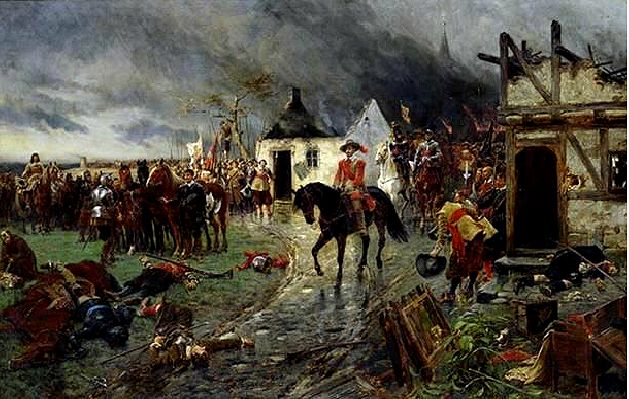The Thirty Years’ War was a major European war that occurred during the 17 th century. Whilst the conflict took place mainly in the area of modern day Germany, it involved many of the great European powers at that time. The Thirty Years’ War had a profound impact on Europe, and some of the consequences of this war can be seen in the changes that were made to European society.
The Beginning of a Brutal 30 Years
The Thirty Years’ War began in 1618, and lasted until 1648. This war started off as a religious war that pitted Catholics against Protestants in the Holy Roman Empire, but then evolved into a conflict between the Habsburg Dynasty and other European powers. The immediate cause of the Thirty Years’ War was the decision by the newly-elected Holy Roman Emperor, Ferdinand II of Bohemia, to impose religious uniformity in his empire. This was seen by his Protestant subjects as a violation of the Peace of Augsburg, and they banded together to form the Protestant. This, in addition to Ferdinand’s refusal to tolerate his Protestant subjects, led to the Thirty Years’ War.
Other major European powers were soon drawn into this conflict, though most of the fighting took place on German soil. Whilst it seemed that these powers chose their sides based on their own religious inclinations, it was in fact politics that influenced their decisions. France, for instance, though Catholic, sided with the Protestants, as they were surrounded by Spain and the Holy Roman Empire, both of which belonged to the Habsburg Dynasty.
Paying the Price
During the Thirty Years’ War, heavier taxes were imposed upon the people. As the fighting went on for a prolonged period of time with large number of mercenary troops, much money was needed to pay these soldiers of fortune. Therefore, citizens of the powers involved in the war were taxed heavily. This was made worse by the fact that during that period, agricultural production declined drastically. Poor harvest coupled with heavy taxation resulted in revolts by the peasantry in various parts of Europe. In spite of such uprisings, the discontent and suffering of the people were ignored by governments.
The Strategic Use of Hostages in the Ancient World
It may be added that the mercenaries generally pillaged and destroyed whatever towns they captured, thus exacerbating the condition of the civilians caught up in this conflict. Moreover, the influx of soldiers from foreign lands, including mercenaries, helped aggravate the spread of disease, which was already rampant during the war. The civilian death toll was highest in Germany, where much of the fighting took place. It has been estimated that armed conflict, disease, and famine reduced the population of Germany by between 15 and 20 %.
The Outcome
The Thirty Years’ War ended with the Peace of Westphalia in 1648. Some of the social consequences of this conflict can be seen in this treaty. For example, under the Peace of Westphalia, the rulers of the German states were once again given the right to determine the religion of their domain. In addition, both Catholics and Protestants were now equal before the law, and Calvinism was given legal recognition. Furthermore, the right to practice one’s faith in public at allotted hours and in private at will was given to Christians living in states where their denomination was not the established church. In a way, this may also be seen as a step towards the separation of Church and State, and the freedom of religion in Europe.










